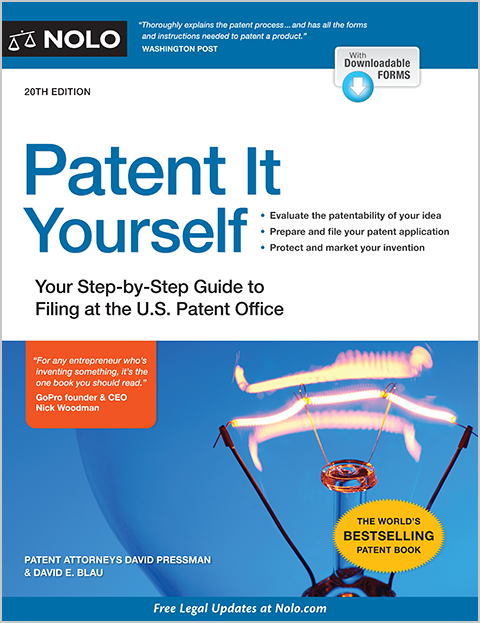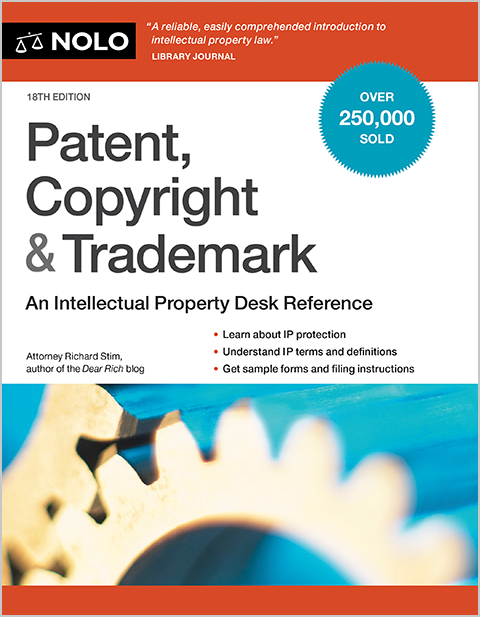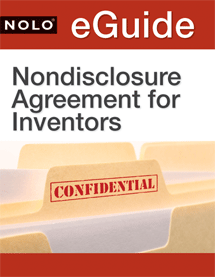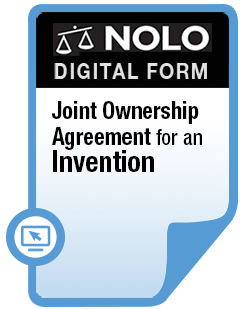Provisional patent applications and nondisclosure agreements are two important strategies for safeguarding your rights.
Imagine that you've developed a potentially marketable invention. What do you do next? You are faced with a dilemma. To make money from the invention, you want to license the invention to another business, often a manufacturer or distributor, who will invest in mass producing, advertising, and selling it. But in pitching the invention to potential licensees, you run the risk of disclosing so much information that the invention might be stolen or no longer be protected by law.
So how can you shop your invention around without jeopardizing your rights? To protect your interests, consider two common strategies employed by inventors, amateur and professional alike. First, you can file a provisional patent application (if your invention is patentable). Second, you can use a nondisclosure agreement (regardless of whether it is patentable).
Filing a Provisional Patent Application
If your invention potentially qualifies for a patent, it could be worthwhile to file a provisional patent application (PPA). By filing a PPA, you can use the term "patent pending" for your invention, which signals to potential licensees that you are serious about protecting your legal rights.
You have one year from the filing date of the PPA to file a non-provisional (regular) patent application. If you file a regular patent application in that time, you'll be able to use the PPA filing date to prove that your invention came before other inventions.
A PPA is much simpler than a regular patent application. As of April 2023, the filing fee for a PPA is $128 for small entities (an individual inventor or a company with fewer than 500 employees) and $64 for micro-entities (an inventor who qualifies as a small entity and meets additional income and patent filing requirements).
Using a Nondisclosure Agreement
Whether or not your invention is patentable, and whether or not you file a PPA, you should always require a prospective buyer or licensee to sign a nondisclosure agreement (NDA) before you reveal your invention. This document is sometimes called a "confidentiality agreement."
Be sure to get a signed NDA before you disclose any secrets about your invention. If the other party violates the NDA by sharing or using your secret without authorization, you can sue for breach of contract and monetary damages. You might also be able to get an injunction (a court order) to stop the unauthorized sharing or use of your confidential information.
NDAs typically contain these important elements:
- definitions of what is and isn't confidential information
- obligations of the party receiving confidential information, and
- applicable time periods.
An NDA might also provide for arbitration of any dispute, since arbitration is a confidential process. If you wind up in traditional litigation, you might be forced to further reveal your secrets in open court.
Defining confidential information. Every nondisclosure agreement provides a definition of confidential information or trade secrets. Every nondisclosure agreement also specifically excludes some information from protection, meaning that the receiving party has no obligation to protect that information. Information isn't protected if it was created or discovered by the receiving party before or independent of their involvement with you.
Obligations of the party receiving the confidential information. The person or company you are sharing confidential information with must hold the information in confidence and limit its use. Under most state laws, the receiving party can't disclose the confidential information, induce others to disclose it, or induce others to acquire it by improper means. Most companies accept these obligations without discussion. If you enter into a mutual nondisclosure agreement (where you agree to keep the other party's information confidential), you should understand these obligations.
Applicable time periods. How long must the information be kept confidential? This issue is often a subject of negotiation. Disclosing parties want a long period, while receiving parties likely want a short one. Five years is a common length in the United States, although many companies insist on no more than two or three years. In Europe, it isn't unusual for the period to be as long as ten years. Ultimately, the result depends on the relative bargaining power of the parties.
The shelf life of your idea is one consideration when negotiating the time period of an NDA. Ask yourself:
- How long will it be before others develop the same innovation?
- If the product were licensed in the next year or two, how long would it be before the "secret" would be figured out by competitors?
If the answer to these questions is only a few years, then you are less likely to be damaged by a shorter (two- to three-year) period.
If you're ready to move forward, you can use Nolo's quick and easy online NDA form.
Disclosing Intellectual Property Without an NDA
NDAs are commonplace, and no buyer or licensee should expect you to disclose your invention without one. If you disclose crucial information without an NDA, you risk losing your rights to the invention (as well as the ability to file a patent if it is considered a "public disclosure" under "first-to-file" patent rules).
Under trade secret law, if you reveal your secret to another party without an NDA or you disclose it publicly, you lose your rights to the secret. In other words, once you've disclosed the secret, it's no longer a protected trade secret.
Under the first-to-file patent law, if you disclose details of an invention to the public before filing for a patent, the invention will no longer be patentable, meaning anyone can use it. If you have filed a provisional patent application, you can make public disclosures (though this isn't recommended), provided you file a regular patent application within one year.
While you should always insist on having an NDA with a prospective buyer or licensee, if you find yourself in a situation where the other party won't sign an NDA and you still want to disclose your invention to them, proceed very cautiously. Here are some tips:
Disclose "around" the secret. A licensee is primarily concerned with two questions about your invention: (i) What does it do? and (ii) Is it likely to be profitable? Try to determine whether there is a way to present your invention and an estimate of its costs without disclosing the actual trade secrets. If you can give a company this information, it might be enticed enough to enter into a nondisclosure agreement.
Establish a confidential relationship. A confidential relationship can, in some cases, be established without a signed agreement. An "implied" confidential relationship occurs when the conduct of the parties indicates that they intended to create one. An implied confidential relationship gives you legal rights similar to those created by a written agreement, but it is always more difficult to prove that an implied relationship existed.
A confidential relationship can be implied if certain factors are present:
- the person to whom you gave confidential information solicited the idea from you—you didn't send it without prompting
- you indicated that the invention was a business proposition and that you hoped for or expected payment
- at the time of disclosure, you requested that the information be kept secret, and
- the information is a trade secret because it has commercial value and isn't known by competitors.
Next Steps
If you have questions about disclosing your invention safely, or you need help drafting a PPA or drafting or responding to an NDA, we recommend consulting with a patent attorney.
To learn more about nondisclosure agreements and other aspects of licensing your invention, get Profit From Your Idea by Richard Stim (Nolo).
Talk to a Lawyer
Need a lawyer? Start here.
How it Works
- Briefly tell us about your case
- Provide your contact information
- Choose attorneys to contact you
- Briefly tell us about your case
- Provide your contact information
- Choose attorneys to contact you



